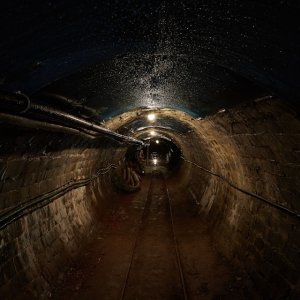
Isthmus of Tehuantepec Train Derails
 By María José Goytia | Journalist and Industry Analyst -
Fri, 03/04/2022 - 13:33
By María José Goytia | Journalist and Industry Analyst -
Fri, 03/04/2022 - 13:33
A major accident occurred at the Isthmus of Tehuantepec Railway (FIT). The last three wagons of the train that carried cement from Medias Aguas, Veracruz to Ixtepec, Oaxaca derailed, breaking the recently installed cement sleepers. Authorities only reported material losses.
The incident was reported on section two of the railway, from Mogoñe to Estación Ubero, in Oaxaca. The affected section started its modernization process as part of the Interoceanic Corridor of the Isthmus of Tehuantepec (CIIT) project. Companies Península Compañía Constructora and Ferropartes Industriales del Norte currently oversee works in section two of the railway.
CIIT is one of the key infrastructure megaprojects promoted by President López Obrador’s administration, which seeks to challenge the hegemony of the Panama Canal via the mobility of containerized cargo on land. CIIT considers the rehabilitation of the railway to connect the Gulf of Mexico with the Pacific Ocean. According to Mexican authorities, the CIIT project should have been ready in April 2021. The inauguration was later delayed to Nov. 2021. However, amid complaints from indigenous communities and the challenges of the COVID-19 pandemic, the work has suffered multiple delays, with no clear competition date at the moment.
Since the modernization of the train was announced, it was met with resistance from the ejidatarios of communities in the northern part of the Isthmus. The residents accepted the project under the condition that the government would carry out social works at the same time. So far, neither the government nor the construction companies have complied, declared the residents.
The rehabilitation of the 185km tracks of the FIT began in June 2020 with an investment of MX$3.11 billion (US$150.6 million) carried out in 79 municipalities in Oaxaca and Veracruz. The FIT’s modernization works include changing rails, sleepers, ballast, the elimination of curves and slopes and the construction of bridges, among other works. The goal is to increase vehicle speeds from 20 to 70 km/h.
The CIIT project has also presented spending anomalies, according to reports from the Federal Superior Audit (ASF). Recently, ASF pointed out that the CIIT does not have the necessary information to evaluate its environmental impact nor how to act to mitigate its possible negative effects.
ASF also detected anomalies in the purchase of ballast. This is gravel that gives stability to the railroad tracks, which was missing in the section affected by the derailment. Specialists explained that ballast avoids longitudinal or transversal swaying of the sleepers. Its absence therefore may be the main cause of the derailment.
In its last report, ASF indicated that it noted a probable deficit against the treasury for MX$72.1 million (US$3.49 million) regarding the supply and placement of ballast, since it was paid according to a unit price of MX$544.77 (US$26.4) instead of MX$528.05 (US$25.6).
















